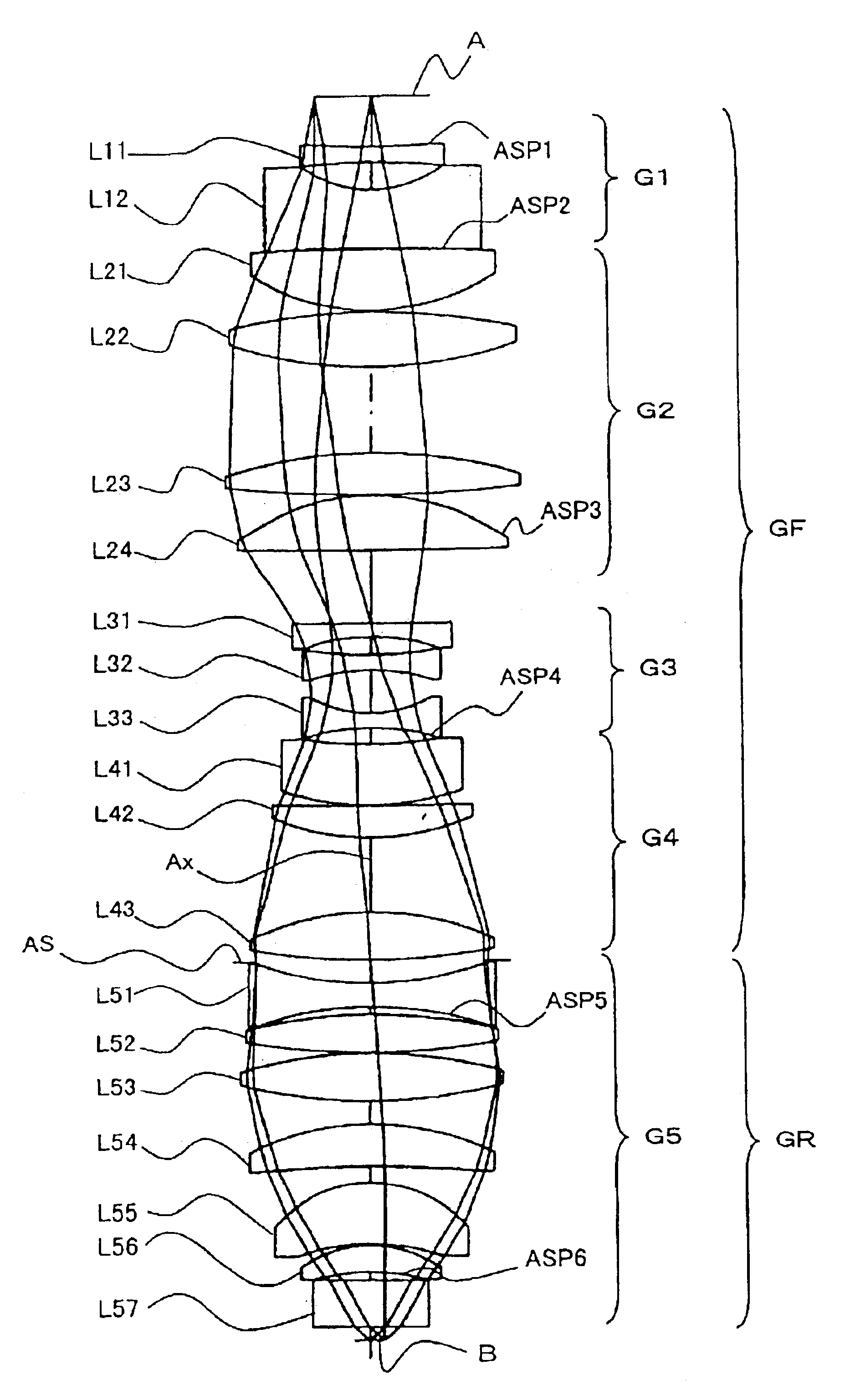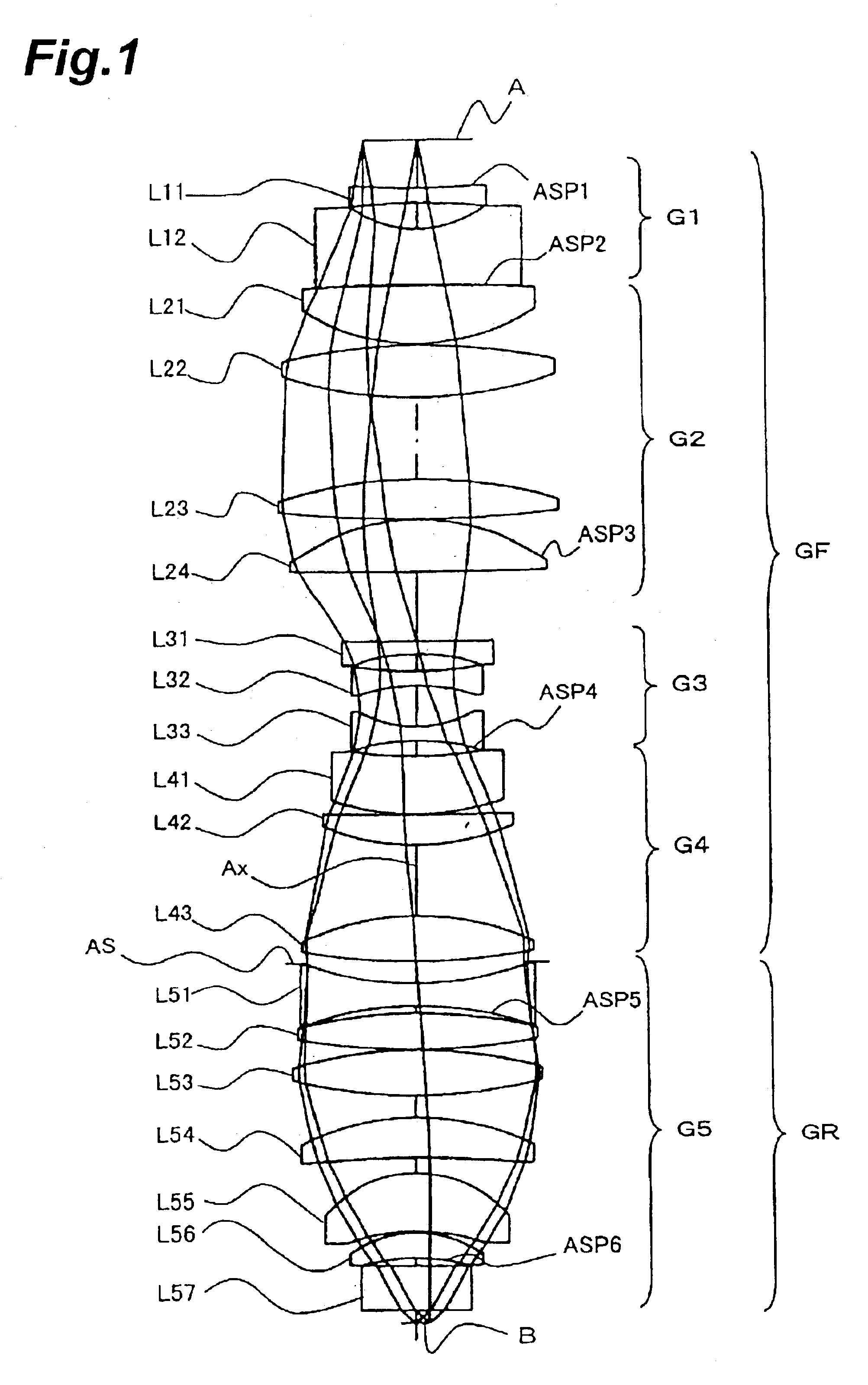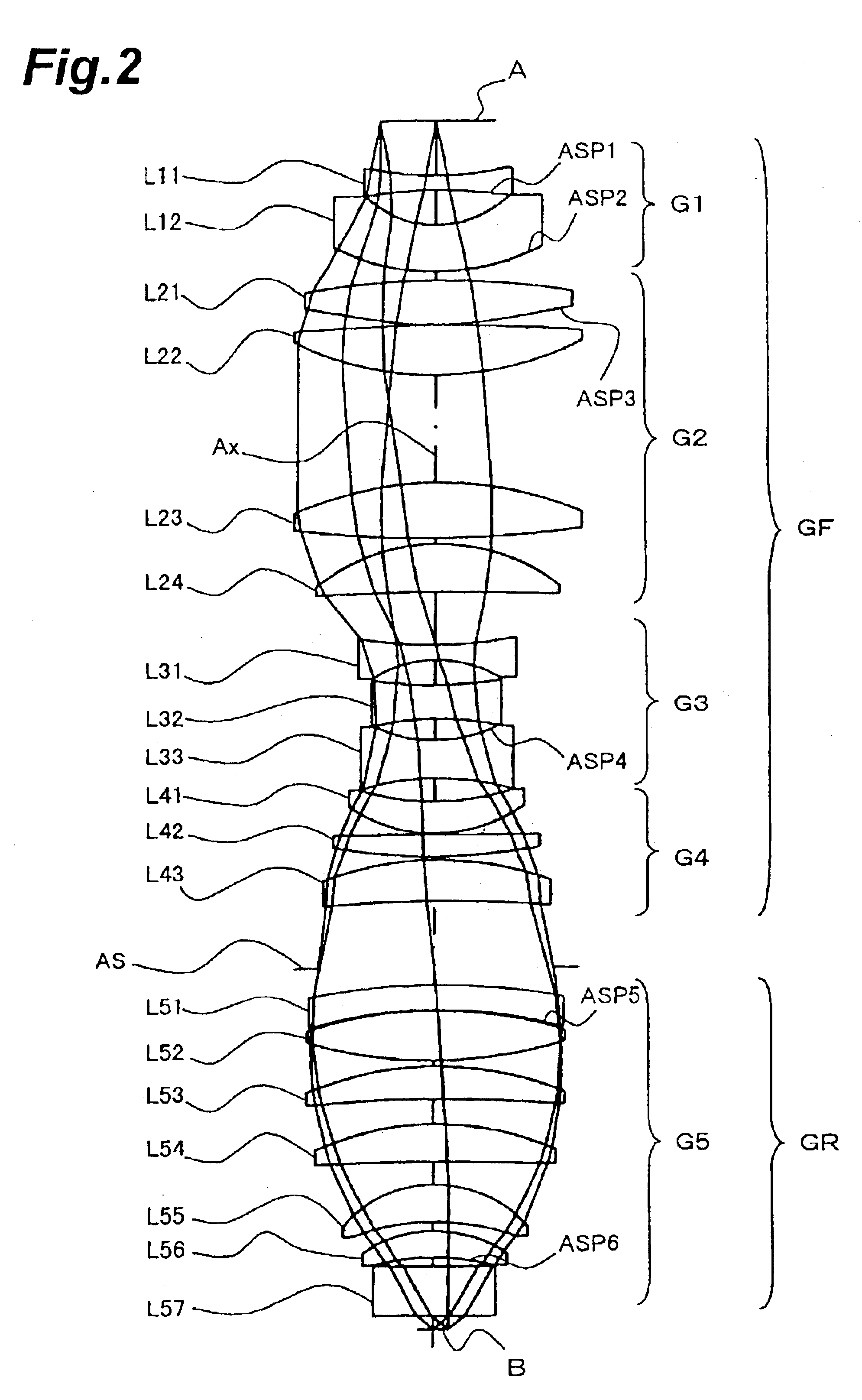Projection exposure methods and apparatus, and projection optical systems
a technology of projection optical system and projection exposure method, which is applied in the direction of photomechanical apparatus, instruments, printers, etc., can solve the problems of limited material availability, limit to the practical band narrowing, and limited material availability
- Summary
- Abstract
- Description
- Claims
- Application Information
AI Technical Summary
Benefits of technology
Problems solved by technology
Method used
Image
Examples
first embodiment
FIG. 1 is the optical path diagram of the projection optical system PL according to the
The projection optical system PL of the first embodiment uses the wavelength of 157.62 nm supplied from the band-narrowed F2 laser, as a reference wavelength and the chromatic aberration is corrected in the range of the wavelength band ±0.2 pm for the reference wavelength. In the first embodiment, all the radiation-transmitting refractors (lenses L11 to L57) in the projection optical system PL are made of fluorite (calcium fluoride, CaF2).
As shown in FIG. 1, the projection optical system PL of the first embodiment has the front lens unit GF of the positive refracting power, the aperture stop AS, and the rear lens unit GR of the positive refracting power in the order named from the first surface A side. According to another grouping, the projection optical system PL of the first embodiment has the negative, first lens unit G1, the positive, second lens unit G2, the negative, third lens unit G3, the...
second embodiment
FIG. 2 is the optical path diagram of the projection optical system PL according to the
The projection optical system PL of the second embodiment uses the wavelength of 193.306 nm supplied from the band-narrowed ArF laser, as a reference wavelength and implements correction for chromatic aberration in the range of the wavelength band ±0.4 pm for the reference wavelength. In the second embodiment, the radiation-transmitting refractors in the projection optical system PL are made of silica glass (synthetic quartz) and fluorite.
As shown in FIG. 2, the projection optical system PL of the second embodiment has the front lens unit GF of the positive refracting power, the aperture stop AS, and the rear lens unit GR of the positive refracting power in the order named from the first surface A side. According to another grouping, the projection optical system PL of the first embodiment has the negative, first lens unit G1, the positive, second lens unit G2, the negative, third lens unit G3, th...
fourth embodiment
In the fourth embodiment, as described above, silica glass (synthetic quartz) and fluorite are used as the lens materials (glass materials) and all the lens surfaces of the aspheric shape are formed in the lenses of silica glass.
FIG. 12 is the optical path diagram of the projection optical system according to the fifth embodiment. In this fifth embodiment, silica glass (synthetic quartz) is used as the principal material (second material) of the radiation-transmitting refractors in the projection optical system and fluorite as the achromatizing material (first material).
As shown in FIG. 12, the projection optical system of the fifth embodiment has the front lens unit GF of the positive refracting power, the aperture stop AS, and the rear lens unit GR of the positive refracting power in the order named from the first surface A side. According to another grouping, the projection optical system of the fifth embodiment has the negative, first lens unit G1, the positive, second lens unit...
PUM
| Property | Measurement | Unit |
|---|---|---|
| wavelength | aaaaa | aaaaa |
| wavelength | aaaaa | aaaaa |
| wavelength | aaaaa | aaaaa |
Abstract
Description
Claims
Application Information
 Login to View More
Login to View More - R&D
- Intellectual Property
- Life Sciences
- Materials
- Tech Scout
- Unparalleled Data Quality
- Higher Quality Content
- 60% Fewer Hallucinations
Browse by: Latest US Patents, China's latest patents, Technical Efficacy Thesaurus, Application Domain, Technology Topic, Popular Technical Reports.
© 2025 PatSnap. All rights reserved.Legal|Privacy policy|Modern Slavery Act Transparency Statement|Sitemap|About US| Contact US: help@patsnap.com



